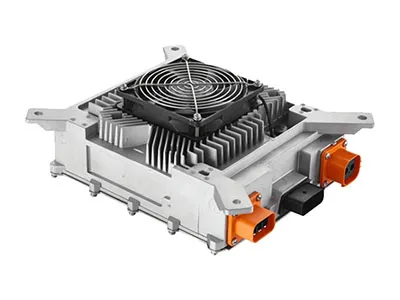For the past two decades, we have been a renowned manufacturer of electric vehicle components in China and globally. Our focus is on Conversion and Distribution Units (CDU), which consist of On-Board Chargers (OBC), DC/DC converters, and Power Distribution Units (PDU). These components are essential for EVs, enabling efficient charging and power distribution between motors, batteries, and other systems.
Yes, samples are available upon request before placing bulk orders.
Absolutely. As a Tier-1 supplier in this field, we have been offering OEM/ODM services for many years.
Yes, we provide at least a 1-year warranty and after-sales service. The type of service varies depending on the product.
An on-board charger is a system built into the vehicle that charges the EV battery.
The on-board charger converts AC power from an external source (such as a charging station or outlet) into DC power, which is then stored in the EV battery.
No, the on-board charger must be compatible with your specific EV model.
Charging time depends on the battery size, charger level, and charging speed. It usually takes between 1 to 12 hours to fully charge an EV.
Yes, hybrid vehicles also use on-board chargers to charge their batteries.
On-board chargers are used for Level 1 and Level 2 charging, which are slower compared to DC fast chargers. DC fast chargers are used for Level 3 charging and can charge an EV up to 80% in just 30 minutes.
Yes, a malfunctioning charger can lead to overcharging, undercharging, or overheating, all of which can shorten the battery’s lifespan. Regular maintenance is essential.
No, the on-board charger must be compatible with the battery speicification of the EV.
DC/DC converters are either isolated or non-isolated. For input voltages over 60V, electrical isolation is required, while for inputs below 60V, non-isolated types can be used.
A DC/DC converter takes in a DC input and produces a DC output. It regulates voltage, ensuring stable power delivery based on the input range.
An isolated DC/DC converter ensures there’s no direct connection between the input and output, offering enhanced safety.
A boost converter raises the output voltage above the input, while a buck converter reduces the output voltage below the input.
Yes, isolated DC/DC converters can be used to provide negative DC outputs.
If you need help to identify the right solution, our expert will be happy to assist you. Please email us or give as a call.

The on-board charger (OBC) is an internal system installed in plug-in hybrid (PHEV) and battery electric vehicles (BEV) to convert alternating current (AC) into direct current (DC) required for battery charging.

The DC-to-DC converter (DC/DC) is an essential component in new energy electric vehicles, responsible for converting high-voltage power from the main battery into low-voltage direct current used by the vehicle's electrical systems, including the auxiliary battery and other low-voltage loads.

The 2-in-1 on-board charging system, also known as an integrated OBC (on-board charger) and DC-DC converter, is an electric vehicle charging solution that combines two essential functions: converting AC power to DC for efficient battery charging, while also stepping down high-voltage power to lower voltage levels for the vehicle’s electrical systems.

The 3-in-1 on-board charging system integrates an on-board charger (OBC), DC-DC converter, and a power distribution unit (PDU) into a single compact unit.